
China
16:51, 19-Sep-2018
60 years of Ningxia: Development with glory
Updated
15:45, 22-Sep-2018
By Bi Ran
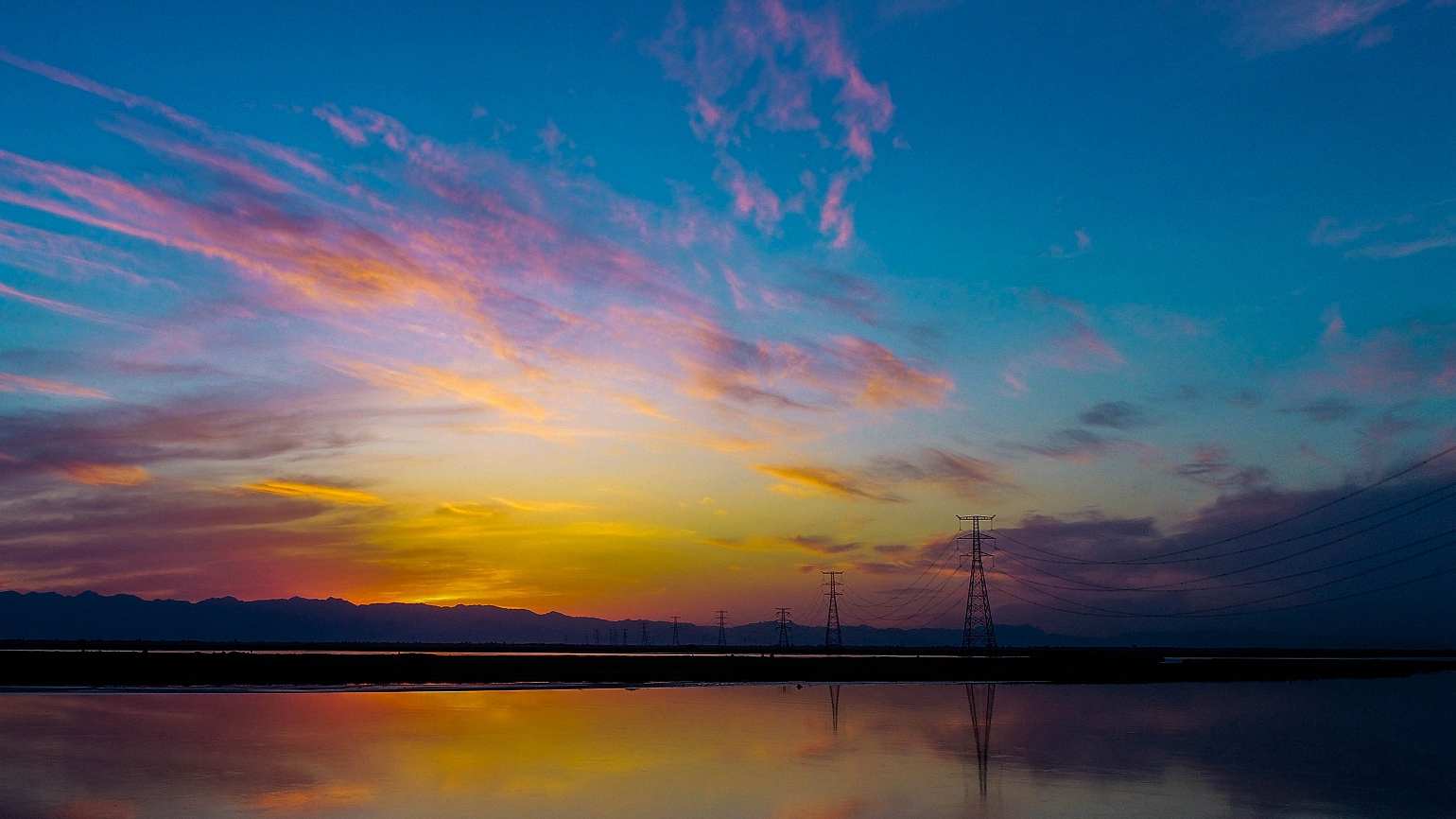
Ningxia Hui Autonomous Region, located in China's northwest, is known as the "watery place beyond the great wall" for its spectacular landscape and unique regional development history.
It's a land with a long history that depicts the diversity of Chinese culture, honoring the unity of ethnic minorities, and demonstrating how the Ningxia people diligently work for a better life.
This year marks the 60th anniversary of the establishment of the Ningxia Hui Autonomous Region. The present-day Ningxia, as a model of ethnic solidarity and regional autonomy, is promisingly vibrant and has shown rapid economic development, stable social status and an improved ecological environment.
Ever since the 18th National Congress of the Communist Party of China, General Secretary Xi Jinping has stressed the importance of the work towards solidifying ethnic unity and boosting economic development in Ningxia.
At this historic moment, as Xi said, poverty alleviation and enhancements to livelihood through economic development have played key roles in
regard to building an all-round moderately prosperous society in Ningxia.
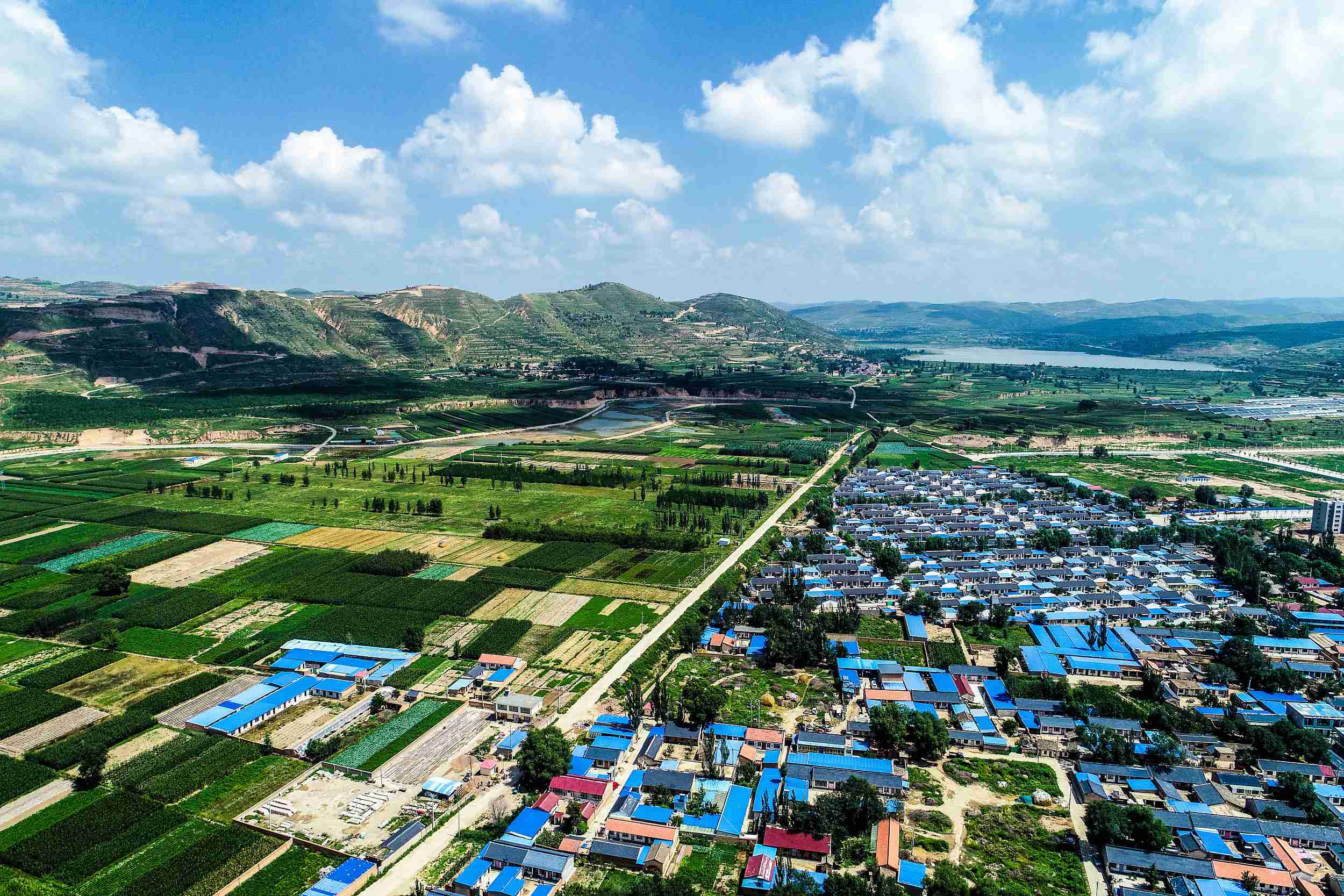
Ningxia's villages develop rapidly through a series of new measure after the 18th National Congress of the CPC. /VCG Photo
Ningxia's villages develop rapidly through a series of new measure after the 18th National Congress of the CPC. /VCG Photo
Targeted poverty alleviation
"For Ningxia, the key measure to win the combat against poverty is enhancing people's livelihood," said Xi Jinping.
Minning Town, a small town situated next to Yinchuan, the capital of Ningixa, has more than 60,000 residents who have resettled here in the past two decades.
This poverty alleviation scheme was set up in 1997 by Xi Jinping, who was then deputy Party chief of Fujian Province and in charge of Fujian's effort to assist Ningxia. The Fujian-Ningxia partnership resettlement program proposed moving entire village communities from poorer areas such as Xihaigu to more fertile lands near the Yellow River.
1.16 million people have benefited from the "Relocation and Transplantation" program, which is now spreading as a model system across China.
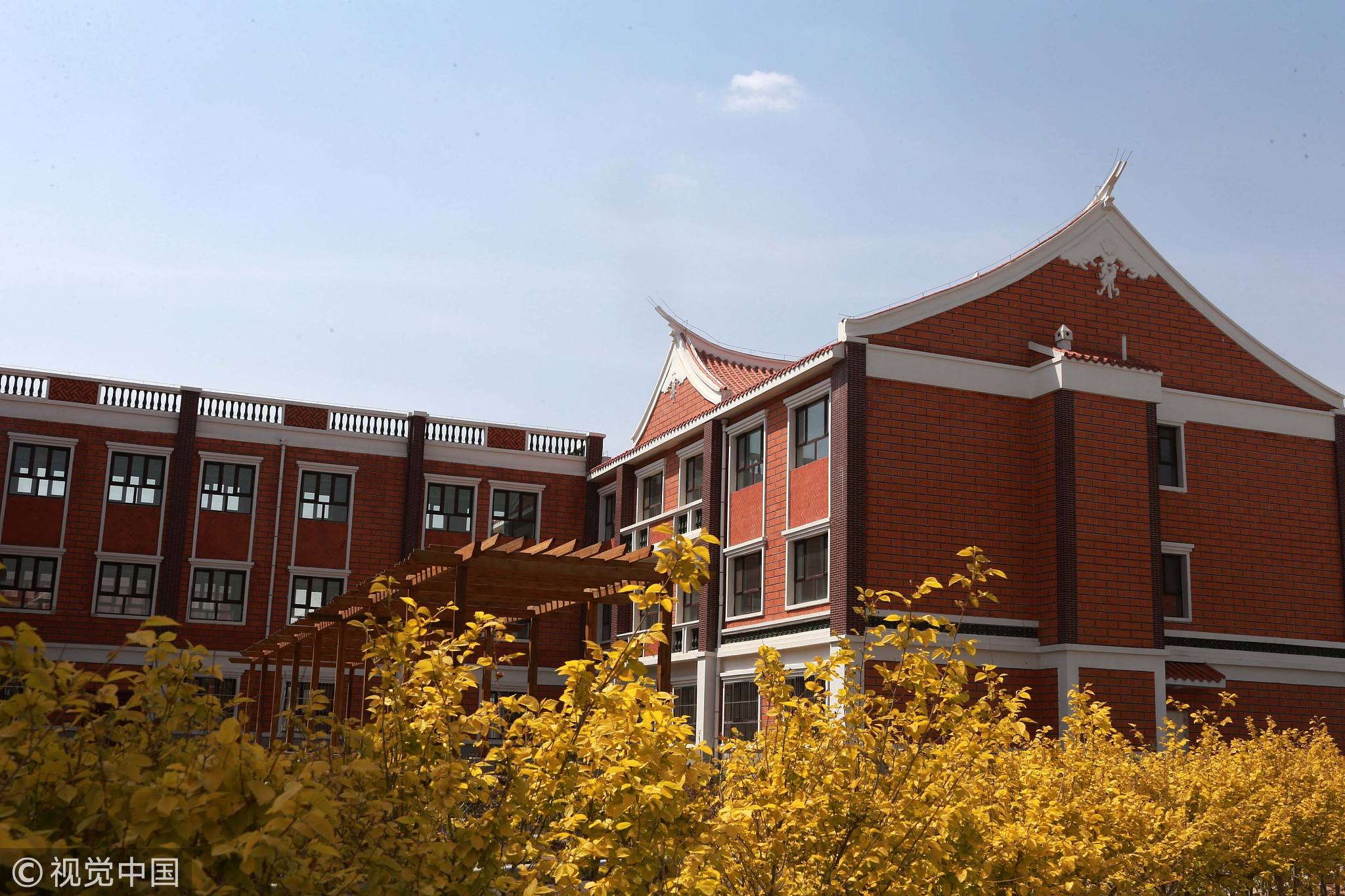
Minning Town now has 60,000 residents. /VCG Photo
Minning Town now has 60,000 residents. /VCG Photo
Poverty alleviation started in 1983 in Ningxia, and has experienced five major stages including "Sanxi" agricultural construction (1983-1993), "Shuangbai" poverty alleviation (1994-2000), thousand-village poverty alleviation (2001-2010), million-people poverty alleviation (2011-2015) and targeted measures-taking poverty alleviation, which is currently the main policy implemented in Ningxia.
The relative policies have helped lift more than 3.3 million people out of poverty in Ningxia. In the past five years, 719,000 people have shaken off poverty, and incidences of poverty have decreased by 16.9 percent.
"Poverty alleviation is getting more and more difficult as it progresses to the end," Xi said. So in the past three decades, the local government has implemented policies to transfer relief measures to assistance measures through development. Meanwhile, the scattered poverty alleviation measures are becoming increasingly targeted, in accord with the blueprint for China's development from 2016 to 2020, which is to lift 10 million people out of poverty every year.
Livelihood matters
49-year-old Gao Hai flew directly from Yinchuan to Dubai for the first time recently thanks to the newly established route that allows people from Ningxia travel around the world more conveniently.
"Of the 200 passengers on the flight to Dubai, I saw many tourists and businessmen," Gao Hai said, adding that the direct route will brings multiple opportunities for Ningxia to further open up.
There are also direct flights now from Yinchuan to Bangkok, Osaka and Kuala Lumpur.
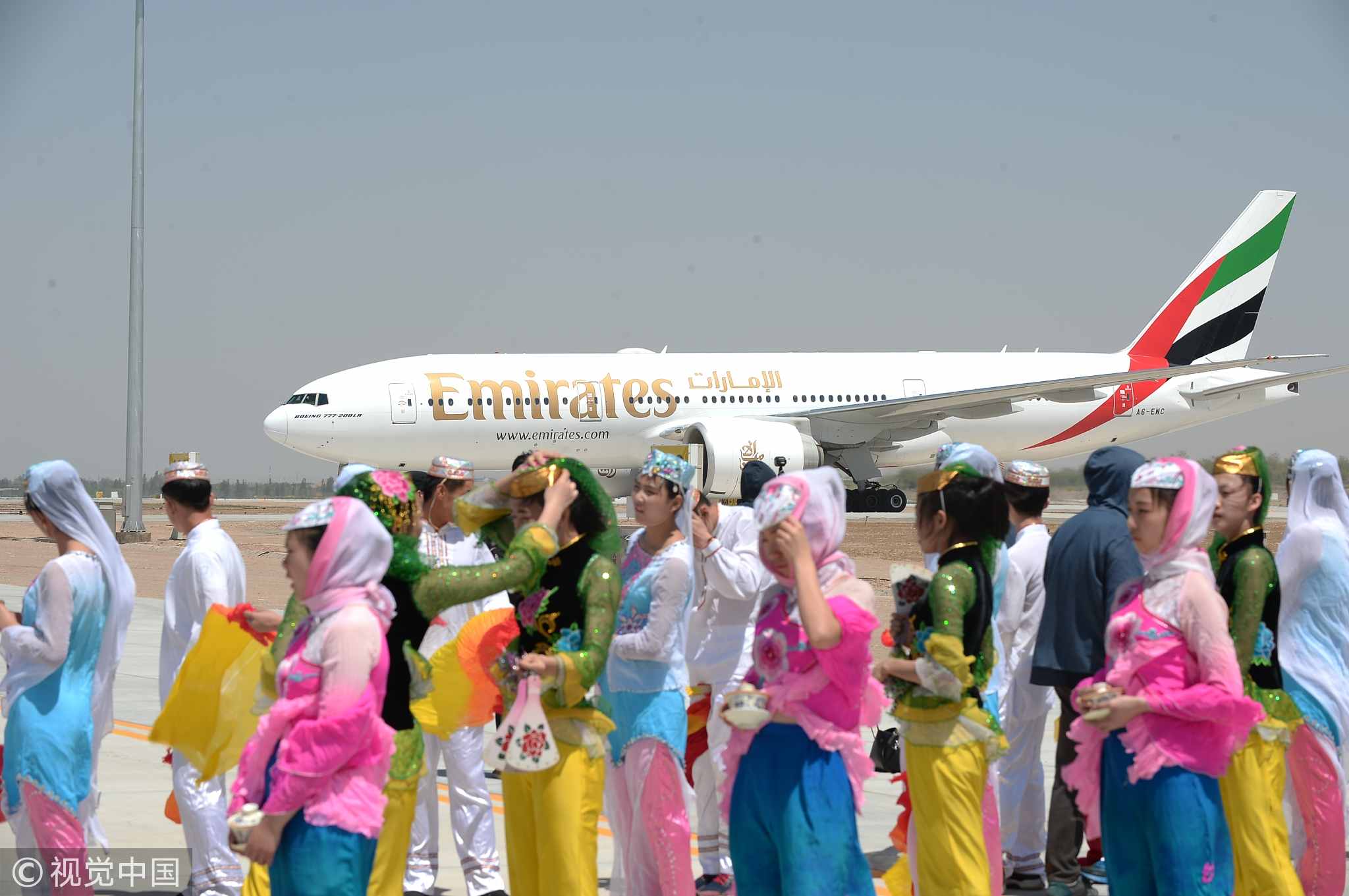
Direct flights between Yinchuan and Dubai make Yinchuan the fourth hub of flights toward United Arab Emirates in China. /VCG Photo
Direct flights between Yinchuan and Dubai make Yinchuan the fourth hub of flights toward United Arab Emirates in China. /VCG Photo
In the 60 years since the Ningxia Hui Autonomous Region was established, GDP in Ningxia has increased 1050 fold to an impressive 345 billion yuan.
The deepening reform and opening up has brought Ningxia to a new stage of overall social development. The urbanization process is accelerating, and more of the ethnic minority people have migrated to cities from rural areas, thus resulting in new issues in education, healthcare, and public services for the left-behind children, women and elderly.
The Ningxia government and local agencies, under the general CPC's national joint development guidelines, have made a series of effective measures for local people.
A standardized network of government administration has been built to better serve citizens. The public transportation system has been much improved, the infrastructure construction has used echo concepts and smart technologies, and travel services have been upgraded as an important part of Ningxia's economy.
Moreover, domestic and international collaboration among health care and education have helped Ningxia attract more talent from around the nation.
The landscape
"It's used to be an ash disposal area for a power plant. Such a polluted place," said Han Xiaoying, manager of People's Park in Shizuishan City. "You could even see the coal ash if you just dug slightly into the soil."
The area now is a beautiful park with desert poplar trees planted everywhere. It was thoroughly reformed after more policies on ecological development were launched, and people's minds began to change as they realized that improving the economy at the cost of environment was not the right thing to do.
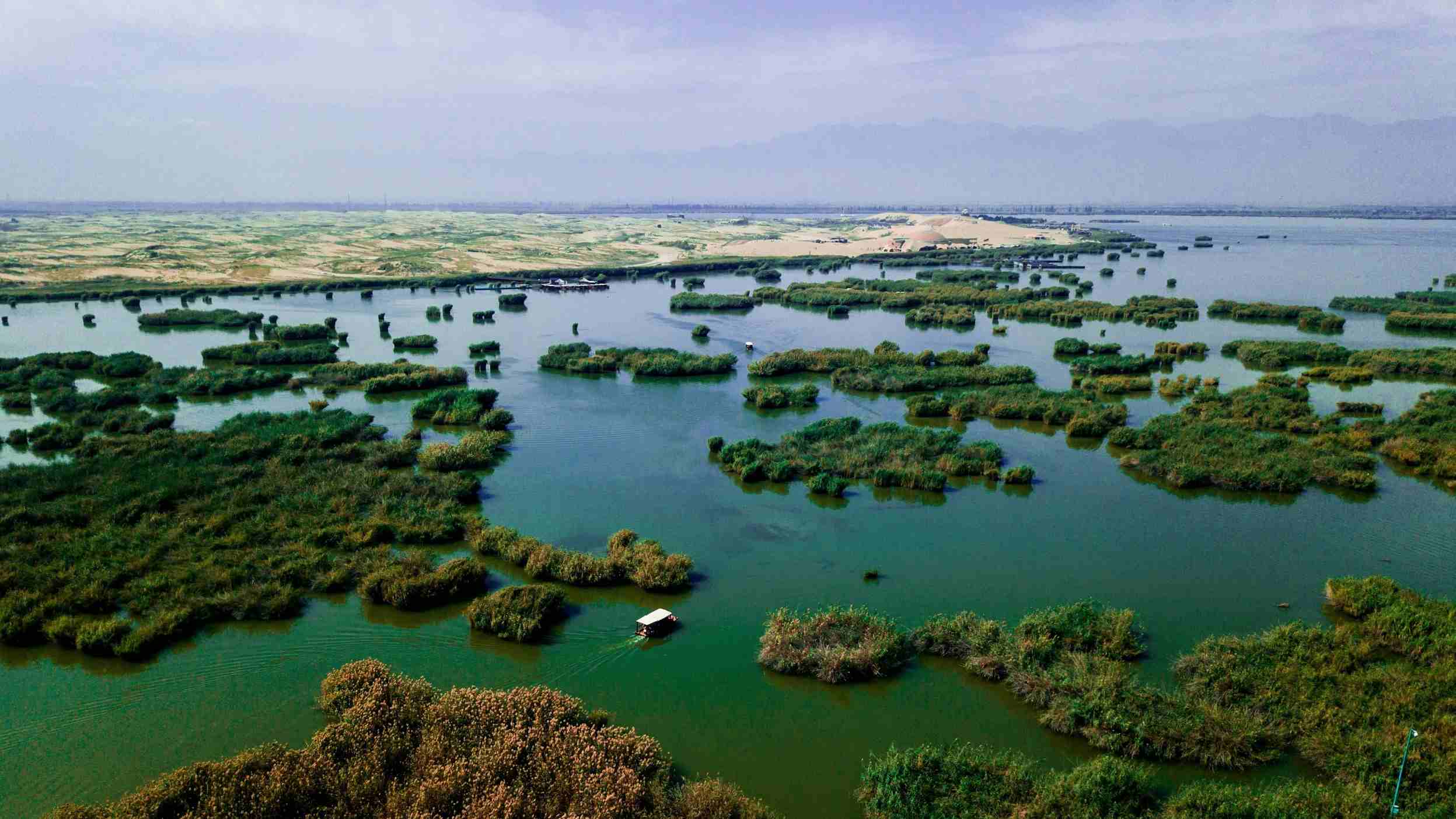
The Shahu River in Shizuishan city is known as the "Pearl of Frontier". /VCG Photo
The Shahu River in Shizuishan city is known as the "Pearl of Frontier". /VCG Photo
The Ningxia people used to live in mud-clay houses and relied on wood and coal. People who have never been to there cannot imagine how anyone could live in a desert.
However, with 60 years of dedicated work, Ningxia now has an organic system of nature and urban development, watery regions and business areas exist together, and residential blocks and transportation networks connect harmoniously.
Yinchuan, capital city of Ningxia, has a 41.48-percent green coverage, and its park land per capita is 16.5 square kilometers. The beautiful views also won Yinchuan the title of international wetland city.
Every inch of Ningxia has changed over the last 60 years. People are striving to turn the land into a brand new destination because the overall development will benefit the local people.
(Cover photo: Yellow River in Ningxia. /VCG Photo)

SITEMAP
Copyright © 2018 CGTN. Beijing ICP prepared NO.16065310-3
Copyright © 2018 CGTN. Beijing ICP prepared NO.16065310-3